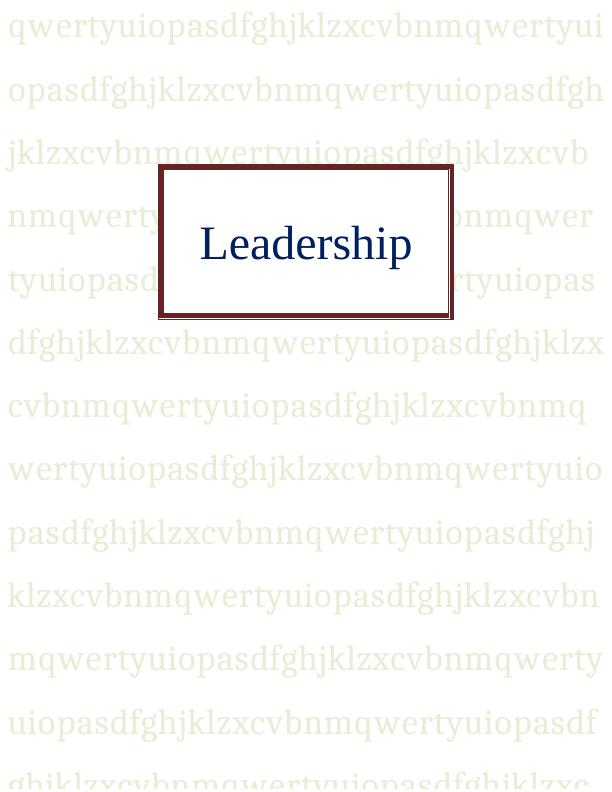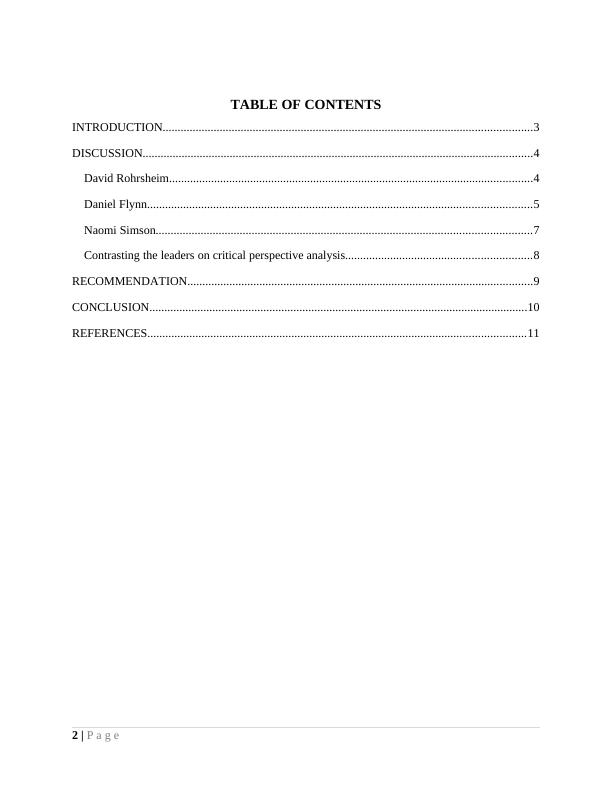Qwertyuiopasdfghjklzxcvbnmqwertyuiopasdfghjklzxcvbnmqwertyuiopasdfghjklzxcvbnmqwertyuiopasdfghjklzxcvbnmqwertyuiopasdfghjklzxcvbnmqwertyuiopasdghjkl
Added on 2020-03-16
14 Pages4998 Words457 Views
qwertyuiopasdfghjklzxcvbnmqwertyuiopasdfghjklzxcvbnmqwertyuiopasdfghjklzxcvbnmqwertyuiopasdfghjklzxcvbnmqwertyuiopasdfghjklzxcvbnmqwertyuiopasdfghjklzxcvbnmqwertyuiopasdfghjklzxcvbnmqwertyuiopasdfghjklzxcvbnmqwertyuiopasdfghjklzxcvbnmqwertyuiopasdfghjklzxcvbnmqwertyuiopasdfghjklzxcvbnmqwertyuiopasdfghjklzxcvbnmqwertyuiopasdfghjklzxcvbnmqwertyuiopasdfghjklzxcvbnmqwertyuiopasdfghjklzxcvbnmqwertyuiopasdfghjklzxcvbnmqwertyuiopasdfghjklzxcLeadership

TABLE OF CONTENTSINTRODUCTION...........................................................................................................................3DISCUSSION..................................................................................................................................4David Rohrsheim.........................................................................................................................4Daniel Flynn................................................................................................................................5Naomi Simson.............................................................................................................................7Contrasting the leaders on critical perspective analysis..............................................................8RECOMMENDATION...................................................................................................................9CONCLUSION..............................................................................................................................10REFERENCES..............................................................................................................................112 | P a g e

INTRODUCTION Leaders are the critical assets of any organization in today’s compelling world. The risingmarket competition, the ever changing needs and dynamically modifying demands make it evenmore difficult for organizations to succeed (Wang and Hackett, 2016). The role of the leaders ofthe organization thus becomes more challenging and demanding. The leaders with their visionand mode of execution devise the path of success and enable companies to perform. Leaders notonly draft strategic plans but also lay down a roadmap that leads to achievements of goals(Amundsen and Martinsen, 2014). They participate in the issues, they enable the teams toperform and they enhance the productivity of the entire organization. The leaders, irrespective oftheir style, approach and method perform their duties and fulfill them. They are inspirational andmotivates for any task completion (Nayab, 2011). They provide guidance and give the chance ofinnovation to all. They do not act like a boss, but prefer themselves to be a team member.Leadership is a very challenging task. With time, the prospects of being a leader havechanged remarkably. A lot many leadership theories have been formulated, documented,researched and tested. These theories spread the awareness of the various styles of leadership,their key skills, their competencies and the approaches to ensure results (Kimmorley, 2015). Aleader may be devising its own methods or it may be utilizing the already known stylesaltogether to create their own signature. Even the characteristics of each leader influences theirstyle of leadership and makes an impact to the organization overall. Leaders are thus, theimpeccable part of an organization that drives the company and its employees towards meetingtheir own professional as well as personal targets.The report presented below critically analysis the role of three leaders that have made amark in the organization with their leadership. They have their unique strategies and havesucceeded in the work place. This report also analysis their work style, the approach towardshandling difficult situations and the correlation of theories to the management style. At the endof the report a recommendation for the maintainability of the success driving factors of theleaders is mentioned. The conclusion drawn reflects the link between the theoretical aspects andthe practical scenarios.3 | P a g e

DISCUSSIONLeaders are important for an organization and effectiveness of leadership is essential forleaders. Leadership styles drive the factors of growth for the company. Each leader bringssomething new to the organization by implementing and executing the techniques that theirleadership styles invoke (Northouse, 2015). The leaders create their impact with the methodsthey use and the principles they follow. Driving the organizations to lead in the market or withthe idea of making a difference creates impact on its employees as well. Therefore a leader, hisexperience and work methodology do shape and define the future of its organization. Belowmentioned are the briefly detailed introductions, roles and the achievements accolade to theleaders with specifications for selecting them. David RohrsheimLeading the Australian division of Uber Inc. David holds the position of GeneralManager in the company. He was the initiator of Uber services in Australia in the year 2012. Heholds a business management degree from Stanford University Graduate School of Business andhas served many companies over time (Fairhurst and Connaughton, 2014). His work span variesto around 18 years, starting from 2015 and has held many positions since. His experienceconstitutes learnings from the domain of marketing, operations, safety, recruiting, legal, publicpolicy & communications.David was the first employee of the company on the country, who was involved inbrining the San Francisco based business to Australia. After successful deployment in Sydney,he helped in expanding the business to other cities of the country including Melbourne, Brisbane,Auckland and five other places (Avolio and Yammarino, 2013). He is actively involved inmanaging the exponentially rising business. He has also contributed in developing employabilityoptions for partner – drivers on Uber platform (Uber's success based simply on giving customerswhat they wanted, 2017).As an engineer holding a First Class Honors degree from Adelaide University, he was thepresident of his college. The traits above show that he was not only exceptionally well atacademics, but was also known to have performed well overall as he won the presidentialelection. His prominent traits reflected from the achievements are intelligence, friendliness,discipline and fearlessness (Choudhary, Akhtar and Zaheer, 2013). The characteristics show that4 | P a g e

End of preview
Want to access all the pages? Upload your documents or become a member.
Related Documents
Leadership Styles and Approaches in Today's Corporate Worldlg...
|10
|2578
|337
Leadershiplg...
|15
|3779
|140
Leadership Approaches | Essaylg...
|8
|1511
|27
Leadership Development - (Assignment)lg...
|9
|1818
|50
Leading Teams in Health and Social Care: Theories, Strategies, and Impact of Leadership Styleslg...
|14
|4957
|446
Transformational Leadership in Nursing: A Concept Analysislg...
|10
|2720
|317
